Dream It, Digitize It, Stitch It: Endless Possibilities in Embroidery

Embroidery has its roots in ancient times when people, especially women, used hand threads to make a pattern on clothes. In the 5th to 3rd centuries, people did embroidery as a relaxing hobby. They were only familiar with a few stitches (back, stem, and run stitches) for clothes, cushion covers, and handkerchiefs. The use of beads, sequins, ribbons, and lace was also common on natural fabrics for embellishment.
But it was a time-consuming process. Later on, with the invention of new tools, materials, and techniques, embroidery took various forms. It also emerged as cultural art in Asian (China) and American countries from generation to generation. Now cross-stitch, quilting, redwork, 3D, free motion, applique, and computerized embroidery are more demanded artwork. If you want to learn how to create 3D embroidery then you can visit: 3D embroidery
Embroidery with the integration of technology, known as digitizing, has replaced hand embroidery. Now converting your artistic ideas into stitches isn’t just a dream. Embroidery digitizing software and computerized machines have been designed to give your ideas a realistic look. You can transform any image, hand sketch, or painting into a digital file. There are endless possibilities in embroidery. For more about embroidery digitizing software then you can visit: 8 Best Embroidery Software For Digitizing
This file is created in a language that feeds your embroidery machine to make eye-catching designs. Digitizing makes embroidery more convenient, precise, fast, and unique. Embroidery digitizing is now greatly admired in many domains for personalization, including fashion, apparel, home decor, branding, and corporate industries. Let’s explore this transformation step by step.
If you want to get knowledge about the Advantages Of Customized Embroidered QR Code Patches, then you can visit: Embroidered QR Code Patches
Table of Contents
Step 1: Dream It

Turning Ideas into Embroidery Designs
Modern embroidery allows artists to turn their creative concepts into physical artworks. It provides endless creative options for home decor, personalized items, gifts, sports, and corporate sectors. There are a lot of advanced embroidery tools (software, machines) that have been manufactured to turn your dreams into reality. For example:
- Use vector graphic tools for making logos for businesses and events
- Monograms and initials for personal branding and gifting
- Turn artwork and illustrations into embroidery designs.
Moreover, you can find endless creative ideas and designs online for your dream embroidery projects. Some popular embroidery digitizing companies like Emdigitizer also offer free high-quality embroidery designs of all categories to use in projects. If you want to know about the best digitizing companies then you can visit: Top 5 Best Embroidery Digitizing Services Provider Companies
Common source of creative embroidery designs:
- Amazon
- Etsy
- Creative Fabrica
- Design by juju
- Embroidery designs.com
- Free embroidery design by em digitizer
Step 2: Digitize It
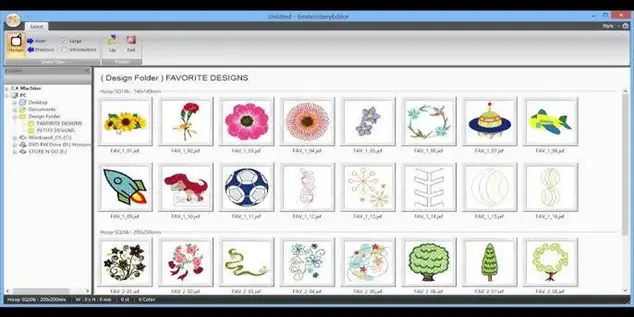
The Art of Embroidery Digitizing
You may be wondering how to convert photos or hand-drawn sketches into accurate designs. The true stars of this production are the embroidery software and machinery. Embroidery digitizing is increasingly popular in the 21st century due to its ability to customize designs and improve productivity.
If you want to get knowledge about Top 50 Halloween Embroidery Ideas, then you can visit: Top 50 Halloween Embroidery Ideas
Process:
The steps that go into digitizing embroidery are broken out as follows:
- Digitizers first use vector software to scan and resize design images and convert them into vector art.
- Then use embroidery digitizing software to assign stitches, color, and parameters like stitch density, push-pull compensation, etc. Some high-end tools and digitizing software are Wilcom, Hatch, Chromato, Brother PE-Design, Inkstitch (free), etc. If you want to learn why Wilcom software is a leader in the digitizing industry then you can visit: 5 Reasons – Why Wilcom Embroidery Software Is a Leader
- Save the design in machine-read format.
- You can also use file format converters to change native files into stitch files such as Dst, Pes, Exp, etc. These files are then transferred into embroidery machines for stitching.
- Embroidery machines operate by executing precise instructions to produce various embroidery designs.
Role of expert digitizer:
The reason behind high-quality, precise embroidery design is the digitizer’s skills. They are responsible for:
- Understanding the client’s design requirements
- Resize and prepare designs for further work
- Effective use of high-quality embroidery digitizing software
- Precise digitizing by specifying stitches, color, density, tension, and push-pull compensation
- Keeping quality control over design
- Saving and sending the final design file within the given deadline
Step 3: Stitch It
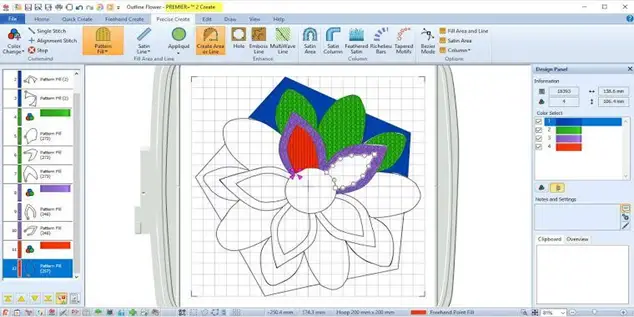
Bring Designs to Life
The first step of the embroidery process is to send a digital file to the machine via USB for stitching. It must be in a compatible format that your embroidery machine can interpret. After that, the desired material is prepared for the final production of the design. The following points help you to get flawless embroidery:
- Always buy high-quality embroidery supplies such as thread, fabric, and stabilizer. The durability and professional appearance of embroidery are determined by the supplies you choose. Puffing, thread breakage, loose stitches, and a deformed and unappealing design are all caused by using the wrong fabric, stabilizer, and low-quality thread. If you want to know about high quality thread then you can visit: 5 Best Embroidery Thread Brands
- The choice of embroidery machine depends on your business scale. And having the wrong machine also gets you in trouble. For home-based embroidery businesses, Brother SE600, PE800, Janome 350 E, Singer 9960, Husqvarna Viking 35, and Eversewn are the best models. A complete guide on Best Embroidery Machines for a Home Business
Endless Possibilities: What Can Be Embroidered?
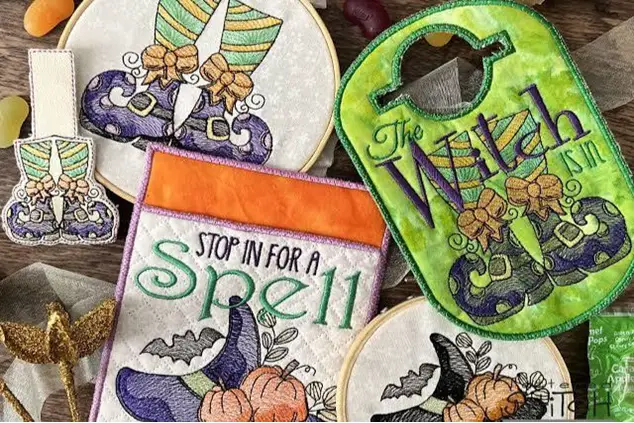
Embroidery is a vast field and has diverse applications in textile, fashion, corporate, home decor, athletic, and branding. Creating logos for badges, patches, applique, or 3D embroidery, and embroidery services are endless. Let’s see how embroidery is leading in the following sectors:
Fashion and apparel
Tracing back from traditional art to this modern era, embroidery is in demand due to craftsmanship, flexibility, and customization. All these features greatly influenced the fashionistas, designers, and embroiderers to add magic to their craft. They tend to use a blend of ancient art and novel embroidery techniques for decorating textiles and accessories. Examples include bridal customized scarves, jackets, FSL jewelry, classic street wear, hats, shoes, bags, etc.
Home Decor
Both hand and modern embroidery are still used to transform upholstery into a piece of art. You can customize pillowcases, tablecloths, curtains, and wall art for different occasions in different styles. For example, embroidery ornaments, Halloween wall hangings, cozy blankets, cushions grocery bags, etc.
Accessories and Gifts
You can also use embroidery to add elegance to daily-use accessories. It allows making personalized bags, towels, stockings, and keychains as a gift to your friends and family.
Corporate Branding
Embroidery is now an integral part of corporate sectors, being affordable, versatile, and durable. Popular brands and marketing firms use embroidery to customize products and showcase services. Embroidery isn’t only a sign of art and beauty; when used for sports and military uniforms, it reflects a sense of power, peace, and honor.
Moreover, the use of multi-head and multi-need embroidery machines is a great tool in commercial industries. They help replicate intricate designs over multiple t-shirts and other materials without losing quality.
Benefits of Modern Embroidery
Due to the following benefits, embroidery is considered the best technique to customize and embellish textiles and accessories.
Durability and longevity:
The use of superior-quality thread, fabric, and stabilizer ensures embroidery lasts a long time. Choose fabric and threads that don’t bleed and bear regular wear and tear. To maintain the longevity of embroidery: If you want to know about the best types of fabrics then you can visit: Best Types Of Embroidery Fabrics
- Ensure proper garment preparation
- Stabilize stitches with backing for consistency
- Correct hoops to prevent fraying, holes, or puckering in the design
- Cleaning of embroidery machines and equipment
- Avoid using harsh chemicals for washing
- Don’t let embroidered items sit under the sun for a long time for drying, etc
Customizability:
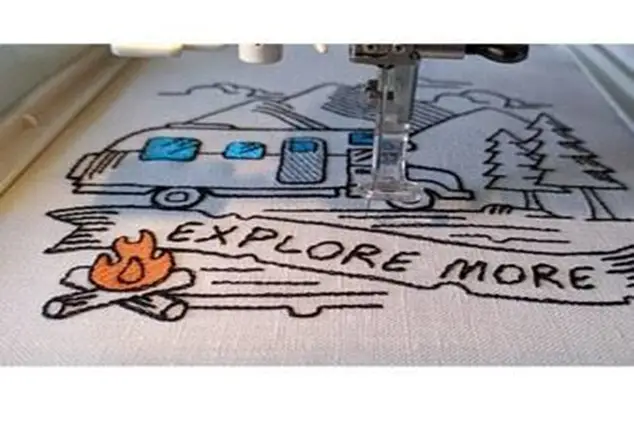
Now you no longer need to be limited with certain designs and colors while styling clothes. Advanced embroidery digitizing enables tailoring designs according to personal preference. Examples include:
- Embroidered initials of children’s names on t-shirts
- Monogrammed towels as a gift
- Sports shirts
- Brand logos on canvas.
- Customized head and footwear
- Decor items and accessories
High-Quality Aesthetic:
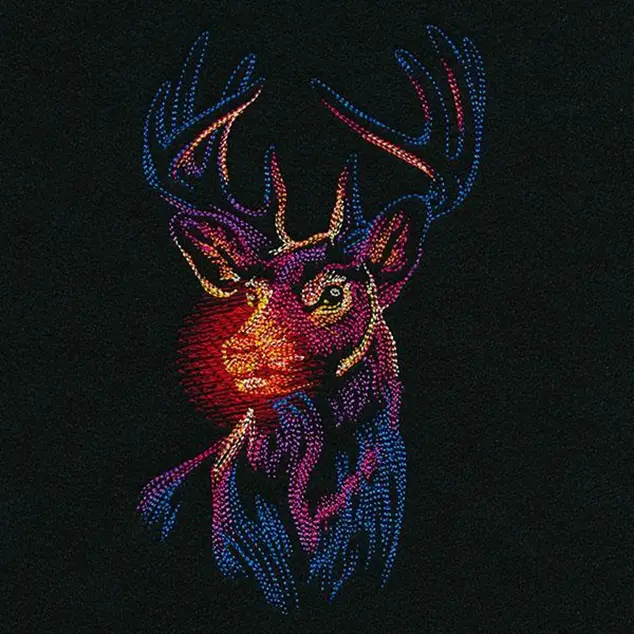
Embroidery makes ordinary items more attractive. There is a great variety of embroidery stitches and techniques used for embellishment. For example, metallic or glow-in-the-dark threads are used to add extra sheen and effects. Whearse applique or patch embroidery also makes clothes and decor items creative and unique. A complete guide on How to Make Embroidery Patches
Eco-Friendly Option:
Opt for the following materials that make embroidery more eco-friendly.
- Use of natural fabrics such as cotton, silk, bamboo, wool, and hemp
- Sustainable threads like cotton, poly neon green (100% polyester)
- Backing materials like Madeira baking are eco-friendly
- Sustainable packaging material for embroidery supplies
Strengthen brand identity:
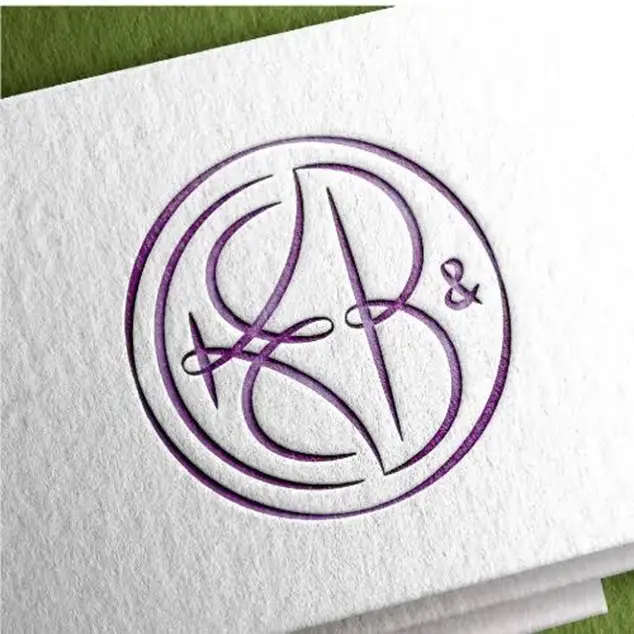
Custom machine embroidery is also a way to introduce your brand services worldwide. By using embroidered canvas, you can add your brand name, logo, or whatever you want. In this way, being excellent at creative embroidery skills is worth it.
You can grab more customers and get benefits in the long run by selling customized embroidery items. Embroidered QR codes embossed on various items are one of the best examples of expanding your brand worldwide.
Fast productivity and accuracy:
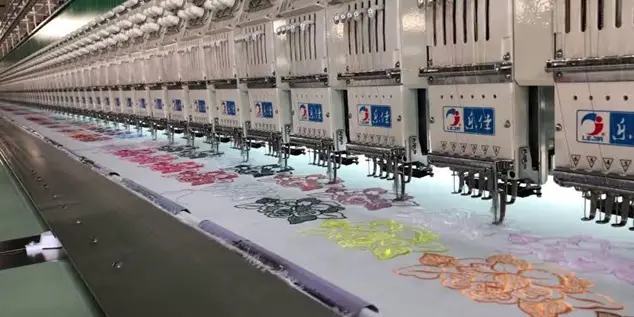
With the advancement of machine embroidery, the development of modern machinery also takes place. Popular machine brands like Brother, Tajima, Bernina, Ricoma, etc. offer single- to multi-head embroidery machines.
The use of these computerized machines enables fast embroidery production while giving consistent designs. Although a multi-head embroidery machine is a large investment, it cuts off labor costs and saves time.
Future of Embroidery:
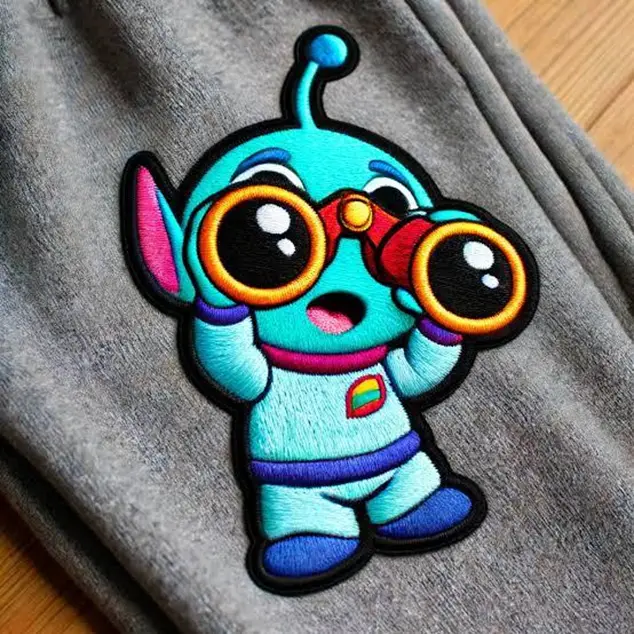
As embroidery digitizing replaced traditional embroidery, it now takes a new form called automatic digitizing. In the future, the use of AI-powered automatic tools and techniques (3D, applique) will make machine embroidery more interesting.
Moreover, embroidery tools and machinery will also be updated to meet the high standards of clients. The way embroidery has been gaining popularity, it will become the most swift and profitable business.
Why “Dream It, Digitize It, Stitch It” is the Perfect Mantra
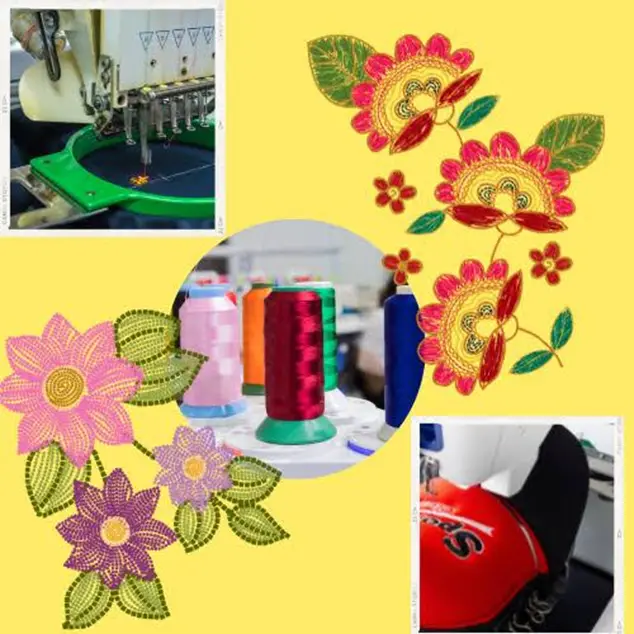
Embroidery combines art, comfort, craftsmanship, durability, and personalization. You can enjoy embroidery as a hobby to reduce your stress. It elevates your artistic and embroidery skills productively. In addition, the role of technology in embroidery (known as digitizing) is inevitable.
Knowledge of basic embroidery and vector art transforms your small shop into a successful digitizing business. For example, you can turn every sketch or captured photo into customized stitches over the desired material. This approach also has a key role in branding and corporate sectors. You can use embroidered canvas to showcase your products and services worldwide, both online and offline. Applications of modern embroidery include:
- Customized staff attire
- Athletic wear
- Embroidered QR code
- Casual to bridal wear
- Personalized home decor items
- Embroidered ornaments and gifts
Conclusion
To sum up, embroidery has revolutionized the way we craft, style, and decorate. From personalized clothes to accessories and home decor, there are endless ways to be creative with embroidery. Go and get new ideas, digitize them, and stitch them on desired stuff.
Embroidery by combining art and technology allows you to start a profitable business as well. However, it is essential to learn embroidery digitizing basics, use quality supplies, and develop creative skills. After that, you’ll be able to create one-of-a-kind embroidery masterpieces to fulfill market demands.
FAQ
What type of design can be converted into embroidery?
You can turn any image or sketch into an embroidery design, but it must be clear. For that, vector graphics in PNG, JPG, and SVG formats are better options for embroidery.
How much time is required for the digitizing process?
The time required to digitize a design depends on how efficient your digitizing skills are and the detail of the design. On average, Emdigitizer delivers the digitized design in 12 hours. But in case of urgent delivery, we digitize the design in 4 hours with a little bit of extra charge and promise high quality.
What fabrics are not suitable for embroidery?
The choice of embroidery fabric depends on the complexity of the design and thread used. For machine embroidery, don’t go with a fabric that is too tight and too loose weave like flannel. Such types of fabrics lack the stability to hold the stitches and result in birdnesting and puckering.
How can I care for my embroidered items?
To increase the longevity of machine-embroidered items, some fundamental steps are:
The best tip is to hand wash using mild detergent to prevent color fading and loose stitches
Instead of using hot dryers, give embroidered items hand-dry
Don’t let embroidered items be placed under the sun for a long time
For ironing garments, layer another piece of cloth or towel over the embroidery. This step is crucial to avoid saggy stitches.
Iron the embroidered clothes from the reverse side. It is another best way to protect stitches from direct heat.